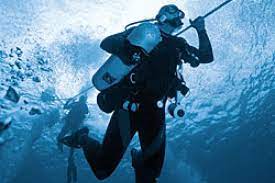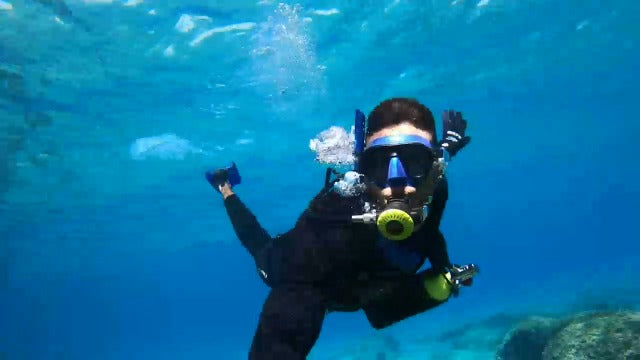When comparing steel vs aluminum scuba tanks, steel is denser and typically has a 30% smaller physical size for similar air capacity (e.g., an 80-cubic-foot tank), making it more compact and negatively buoyant when empty. Aluminum tanks are larger, lighter, and positively buoyant at the end of a dive, often requiring less weight. However, steel is more susceptible to corrosion if not properly maintained, while aluminum is more corrosion-resistant but can fatigue over time.
Weight and Buoyancy Differences
Let's break it down with the most common tank, the 80-cubic-foot (11.1-liter) capacity cylinder. An aluminum 80 (AL80) is the industry workhorse. It typically weighs around 31 pounds (14 kg) when empty. An AL80 has an outer diameter of about 7.25 inches (18.4 cm) and is roughly 26 inches (66 cm) tall. Thanks to steel's superior strength and density, it can be made much smaller, often with a diameter of just 6.9 inches (17.5 cm) and a shorter profile. The real win is on the scale: an empty steel 80 weighs significantly less, usually between 28 to 31 pounds (12.7-14 kg), but can be even lighter for advanced alloys.
This is where the choice impacts your lead weight requirements directly.
-
An empty aluminum tank is positively buoyant by about 1.4 to 2 pounds (0.6-0.9 kg).
-
A standard steel 80, in contrast, is negatively buoyant even when empty, by about 6 to 8 pounds (2.7-3.6 kg). This significant negative buoyancy works in your favor, meaning you need to wear less lead weight on your belt—often 4 to 6 pounds (1.8-2.7 kg) less than with an aluminum tank.
As you breathe down 3,000 PSI of air (which weighs roughly 6 pounds or 2.7 kg), both tank types become lighter.
Tank Durability and Longevity
It's not just about which one is "stronger"; it's about how they age, how they handle damage, and what kind of maintenance schedule they demand over a 15 to 30-year lifespan.
Most aluminum tanks are made from 6061-T6 alloy, while common steel tanks use chromium-molybdenum steel (e.g., 4130 steel).
This is a primary reason aluminum tanks have a mandated eddy current test or hydrostatic test every 5 years.While it also requires hydrostatic testing every 5 years, its fatigue life is generally considered to be longer than that of aluminum when properly maintained.
To see how these properties play out in real-world scenarios, here’s a direct comparison:
|
Characteristic |
Aluminum Tanks (e.g., AL80, 6061-T6) |
Steel Tanks (e.g., HP100, 4130 Steel) |
|---|---|---|
|
Corrosion Resistance |
High. Forms a self-protecting oxide layer. Resists pitting corrosion well. |
Low. Requires intact coatings (paint, epoxy). Vulnerable to rust if exposed. |
|
Wall Thickness |
Thicker. Typically 0.34 - 0.43 inches (8.6 - 10.9 mm) to contain pressure. |
Thinner. Can be 0.18 - 0.24 inches (4.6 - 6.1 mm) due to higher material strength. |
|
Dent & Impact Resistance |
Lower. Softer metal dents more easily. Dents can concentrate stress. |
Higher. Harder metal better resists impacts and abrasions from boat decks. |
|
Primary Failure Mode |
Fatigue cracking over ~10,000+ fill cycles. Managed with 5-year testing. |
Internal/External corrosion leading to wall thinning. Managed with annual visials. |
|
Typical Service Life |
20-30 years, but often retired earlier due to excessive denting or damage. |
30+ years is common. Many vintage tanks from the 1970s are still in service. |
|
End-of-Life Signs |
Deep dents, significant wall thinning, failed hydrostatic test. |
Significant corrosion pitting >0.038 inches (1 mm) deep, failed visual inspection. |
The longevity of any tank is >80% dependent on regular maintenance and proper handling, not just the base material.
Cost and Availability Comparison
A brand new AL80 (80 cubic foot) aluminum tank typically retails for between 350. Compare that to a new high-pressure steel tank of similar capacity, which will usually set you back between 850, representing a 60-100% price premium for the steel option.
If you walk into any dive shop from the Caribbean to Southeast Asia, over 90% of the rental fleet will be comprised of standard AL80 tanks.Finding a steel tank for rent is possible, but it often requires calling ahead to specialty shops and may come with a 10-20% higher rental fee.
However, the true cost of ownership over a 5 to 10-year period tells a more nuanced story. A 10-year-old steel tank that has passed its visual and hydrostatic tests can easily retain 50-70% of its original value. A similar-aged aluminum tank, while still holding some value, will typically only fetch 30-50% of its original cost.
The buoyancy characteristics of steel mean you'll need 4-6 pounds less lead on your weight belt. More importantly, carrying less weight reduces air consumption, potentially extending a typical 45-minute dive by an extra 5-10 minutes. For a diver who invests in their own gear, steel's higher upfront cost can be amortized over a 20+ year lifespan.
Maintenance and Care Needs
Their different material properties demand completely different care routines to maximize their 20 to 30-year service life.
A thorough freshwater rinse within 24 hours of diving is non-negotiable to remove salt, chlorine, and sand. The critical maintenance item is the annual visual inspection (VIP) performed by a certified technician. Because aluminum is susceptible to fatigue, it must undergo a hydrostatic test or eddy current test every 5 years to verify its structural integrity remains within a +10% to -5% expansion tolerance under pressure.
The external paint or powder coat is its primary shield; any chip or scratch down to the bare metal must be sanded and touched up with a cold galvanizing compound within 48 hours to prevent a rust patch from forming. You must never let a steel tank sit for more than 2-3 hours with the valve open after a fill, as humid air from the compressor will condense inside. The rejection standard is strict: any pit with a depth exceeding 0.038 inches (1 mm) typically fails the tank.
This table breaks down the key maintenance hurdles for each type:
|
Maintenance Aspect |
Aluminum Tanks (AL80) |
Steel Tanks (HP100) |
|---|---|---|
|
Primary Threat |
Fatigue cracking from fill cycles (~10,000+), external corrosion. |
Rust (oxidation) from moisture, both internally and externally. |
|
Critical Routine |
Annual VIP for internal moisture, dent mapping. 5-year hydro/eddy test. |
Annual VIP with borescope for internal pitting. Immediate exterior coating repair. |
|
Failure Criteria |
Dents exceeding 0.010 inches (0.25 mm) depth, failed pressure test. |
Corrosion pitting >0.038" (1 mm) deep, significant external rust. |
|
Moisture Control |
Important. Avoid draining tank to 0 PSI to prevent humid air ingress. |
Critical. Store with 200-500 PSI of dry air. Valve must be kept closed. |
|
Average Annual Maintenance Cost |
60 for annual VIP. 80 for hydrostatic test every 5 years. |
75 for a more involved annual VIP. Similar hydro test cost. |
|
Owner Effort Level |
Moderate. Focus on physical protection and timely rinsing. |
High. Requires constant vigilance against coating damage and moisture. |
The bottom line is that aluminum tanks are generally lower-friction to maintain year-to-year, but their 5-year test is mandatory and non-negotiable.However, this proactive care is what allows steel tanks to reliably remain in service for 30 years or more, often outliving their aluminum counterparts.
Ideal Use Case Scenarios
The ideal choice maximizes your comfort, safety, and budget based on a 60-minute dive profile.
The sheer availability of rental AL80 tanks at over 90% of resorts worldwide makes them incredibly convenient. You avoid airline baggage fees and the hassle of transporting your own tank for what might be 5-10 dives per year. The lower initial cost also means you can allocate your 2500 gear budget to a computer, regulator, or buoyancy compensator that offers a more immediate improvement to your dive experience.
If you’re doing 40+ dives a year, the long-term investment quickly justifies the higher upfront cost. The need for 4-6 pounds less lead on your weight belt dramatically improves your trim and reduces air consumption, potentially extending your bottom time by 5-10%. This is a game-changer for cold-water diving where you’re already wearing a thick 7mm wetsuit or drysuit that adds significant buoyancy.
Here’s a quick breakdown of who should lean toward which material:
-
Choose Aluminum If:
-
You are a vacation diver and use rental gear for 90% of your dives.
-
Your annual dive count is low (under 20 dives) and your budget is a primary concern.
-
You primarily dive in warm, tropical water with a 3mm wetsuit and minimal exposure protection.
-
You want the simplest path with no concerns about internal corrosion or coating maintenance.
-
-
Choose Steel If:
-
You are a frequent, local diver logging 50+ dives per year and own your gear.
-
You dive in cold water requiring a dry suit or 7mm+ wetsuit, where the extra weight needed for aluminum tanks becomes cumbersome.
-
You are pursuing technical diving certifications where precise trim and extended gas volume are critical.
-
You value long-term value and plan to use the same tank for a 15 to 20-year lifespan.
-






اترك تعليقًا
تخضع جميع التعليقات للإشراف قبل نشرها.
This site is protected by hCaptcha and the hCaptcha Privacy Policy and Terms of Service apply.